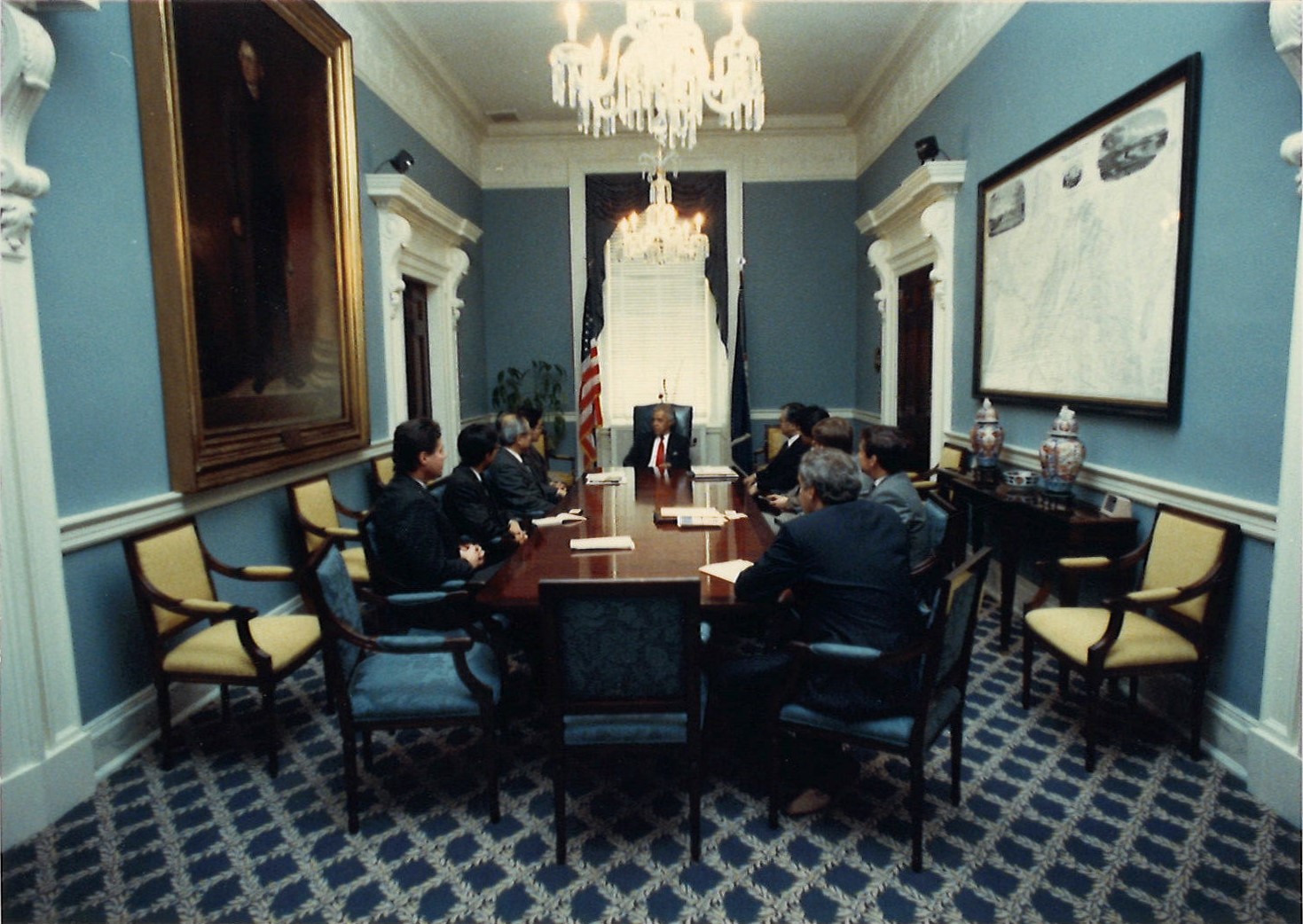Please join the Library of Virginia as we observe Asian American and Pacific Islander Heritage Month!
The U.S. Census Bureau defines Asian as “A person having origins in any of the original peoples of the Far East, Southeast Asia, or the Indian subcontinent including, for example, Cambodia, China, India, Japan, Korea, Malaysia, Pakistan, the Philippine Islands, Thailand, and Vietnam,” and Native Hawaiian or Other Pacific Islander as “A person having origins in any of the original peoples of Hawaii, Guam, Samoa, or other Pacific Islands.”1
The continent of Asia is actually much larger, including Central Asians who are “Afghan, Armenian, Azerbaijani, Georgians, Kazakh, Kyrgyz, Mongolian, Tajik, Turkmen, Uzbek,” and West Asians who are in a region more commonly referred to as the Middle East: “Bahrain, Iran, Iraq, Israel, Jordan, Kuwait, Lebanon, Oman, Palestine, Qatar, Saudi Arabia, Syria, Turkey (straddles Europe and Asia) United Arab Emirates and Yemen.”2 Most of Asia’s boundaries are defined by water, including the Arctic, Pacific, and Indian oceans, the Red Sea, the Bering Strait, the Suez Canal, and the Bosporus and Dardanelles straits. The border with Europe is different, consisting of the Ural Mountains, Emba River, Caspian Sea, Kuma-Manych Depression, Sea of Azov, Kerch Straight, Black Sea, and Caucasus Mountains.3
If you visit the Library in May, be sure to stop by the Local History and Genealogy Room, as well as the Circulation display area that is right next to it.
A new exhibit on the 20th anniversary of the Virginia Asian Advisory Board opens in the Library’s Local History and Genealogy Room on May 2. This Board’s purpose is “to advise the Governor on ways to improve economic and cultural links between the Commonwealth and Asian nations, with a focus on the areas of commerce and trade, art and education, and general government, and on issues affecting the Asian-American communities in the Commonwealth.”4 Although the Board was created in 2001, the first members were not appointed until 2003.
The display area near Circulation will have a selection of fiction and nonfiction books by or about Asian Americans. If you are a Virginia resident with a Library of Virginia library card, you can even check them out. Click here for information on how to obtain a library card.
Even if you cannot visit, you can still take part in the observance!
On May 1, look for an UncommonWealth blog post about the Japan External Trade Organization (JETRO), which is a non-profit organization under the auspices of the Japanese Ministry of Economy, Trade, and Industry that is based in Tokyo and Osaka and has offices in 50 countries. It was created in 1958 to promote Japanese exports. By 1990, it began to change its focus from exports to imports. This new focus coincided with the administration of Governor L. Douglas Wilder (1990–1994), which negotiated an agreement in 1992 to have one of JETRO’s Senior Trade Advisors based in the Virginia Department of Economic Development (now the Virginia Economic Development Partnership).
At the end of the month, there will be a post about several collections that pertain to aid to Armenia in the 1910s. Armenian Christians living within the Ottoman Empire were the victims of a genocide in 1915 and 1916. Christians within the United States felt solidarity with the Armenian Christian community, and relief efforts raised $110 million (now $1 billion) for their aid.5 Promotional materials—including stamp books that encouraged children to divert money that they might spend on candy or trolley rides to relief efforts, informational pamphlets, church liturgies—as well as financial forms and a plea for Armenian independence that was directed to Governor Westmoreland Davis are represented in the Library of Virginia’s collections.
At any time, please take some time to explore our Asian Pacific Islander Desi American (APIDA) resource page, which includes resources for researching Asian Pacific Islander Desi Americans within the Library of Virginia’s holdings and beyond. Please note that research to locate APIDA resources is ongoing, so the website and guides are evolving, and many ethnic groups and populations are not yet represented.
Footnotes
[1] United States Census Bureau, “About the Topic of Race,” last modified 1 March 2022, https://www.census.gov/topics/population/race/about.html.
[2] Asian Pacific Institute on Gender-Based Violence, “Census Data and API Identities,” https://www.api-gbv.org/resources/census-data-api-identities/.
[3] Lewis Owen, et al. “Asia,” in Encyclopaedia Britannica (Encyclopaedia Britannica, Inc., 2023), https://www.britannica.com/place/Asia.
[4] Va. Code Ann. §2.2-2448-2451 (2023), online: https://law.lis.virginia.gov/vacodefull/title2.2/chapter24/article17/.
[5] National WWI Museum and Memorial, “Armenian and Syrian Relief Fund,” https://www.theworldwar.org/learn/about-wwi/spotlight-armenian-and-syrian-relief-fund; United States Holocaust Memorial Museum, “The Armenian Genocide (1915-16): Overview, https://encyclopedia.ushmm.org/content/en/article/the-armenian-genocide-1915-16-overview.
Header Image Citation
Photograph of Governor Lawrence Douglas Wilder meeting with representatives of JETRO, 23 January 1990. Records of the Office of the Secretary of Economic Development, Correspondence and Subject Files, 1986-2002, Accession 34595, Box 31, Folder: JETRO, 1990-1993, Library of Virginia, Richmond, VA.








